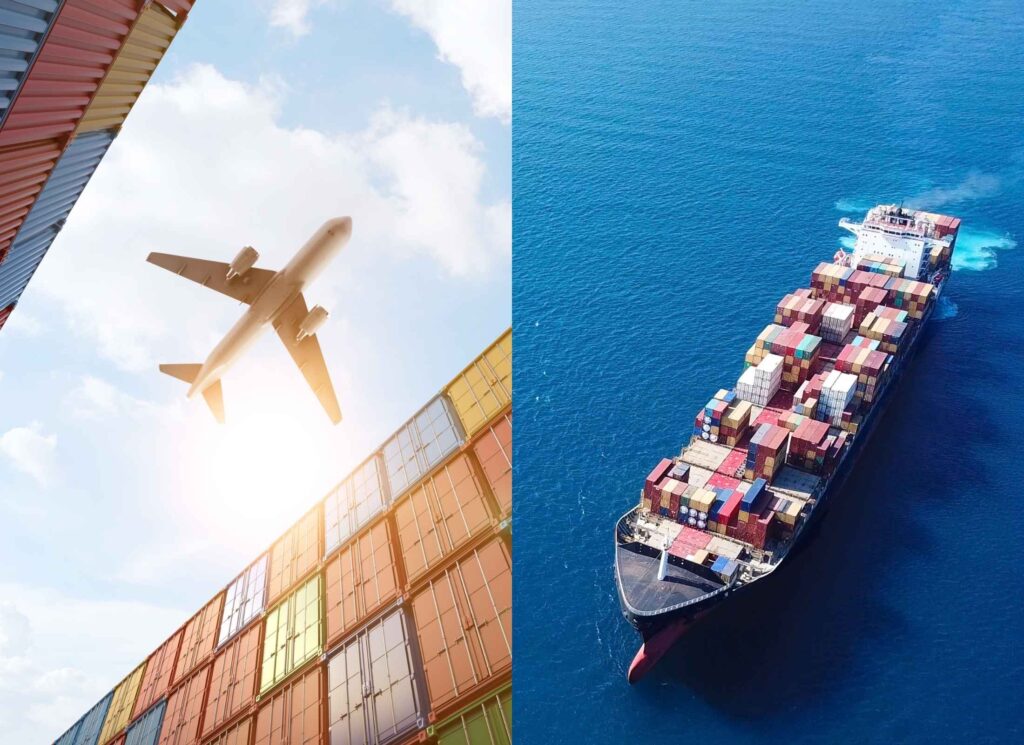In today’s global marketplace, selecting the optimal shipping method is crucial for businesses aiming to balance efficiency, cost-effectiveness, and environmental responsibility. This guide explores the key differences between sea freight and air freight, helping you make an informed decision that aligns with your logistics needs and sustainability goals.
Understanding sea freight: The optimal choice for large-scale shipments
Sea freight stands out as an ideal choice for large-scale shipments. Here’s why Hecksher recommends it:
- Cost-effective for voluminous cargo: Ideal for businesses shipping large quantities over long distances, offering significant economies of scale.
- Lower carbon footprint: Ships emit less CO2 per ton of cargo compared to aircraft, making sea freight a better option for environmentally conscious companies. At Hecksher, we offer the possibility to switch fuel to Maritime Biofuel Insets and cut the fossil emissions of your shipment by up to 100%.
- Capacity for oversized items: Vessels can accommodate larger and heavier cargo that may not be suitable for air transport.
However, we advise our clients to consider these factors:
- Extended transit times: Ocean shipping typically takes longer, which may impact time-sensitive supply chains.
Air freight: The swift solution for time-critical shipments
When speed is paramount, Hecksher’s air freight services offer several advantages:
- Rapid global delivery: Ideal for time-sensitive goods, with the ability to reach international destinations within days.
- Enhanced security measures: Our stringent protocols reduce risks of theft or damage, crucial for high-value items.
- Access to remote locations: Hecksher’s air freight can reach areas that may be challenging for sea transport.
Consider these limitations:
- Higher shipping costs: Generally more expensive than sea freight, especially for larger shipments.
- Cargo size restrictions: Aircraft have specific limitations on cargo dimensions and weight.
- Larger environmental impact: Aircrafts emit more CO2 per ton of cargo.
Key factors in choosing between sea and air freight
To determine the most suitable and sustainable shipping method, Hecksher helps you evaluate these aspects:
- Urgency of delivery: Time-critical shipments may necessitate air freight despite higher costs.
- Budget considerations: For cost-sensitive operations, sea freight often provides better value, especially for large volumes.
- Shipment dimensions: Oversized or heavy items typically align better with sea freight capabilities.
- Nature of goods: Perishables, such as food with limited shelf-life, or high-value products might benefit from air freight’s speed and security.
- Environmental impact: Companies prioritizing sustainability often lean towards sea freight for its lower carbon emissions.
Making an informed decision for your shipping needs
Choosing between sea freight and air freight requires careful consideration of various factors, including cost, time sensitivity, cargo characteristics, and environmental impact. At Hecksher, we help you weigh these elements against your specific business needs and sustainability goals, enabling you to select the most suitable shipping solution.
For personalized advice, consult with our experienced logistics professionals for an air freight quotation or to explore our sea logistics options. We provide tailored solutions to meet your unique shipping needs.





